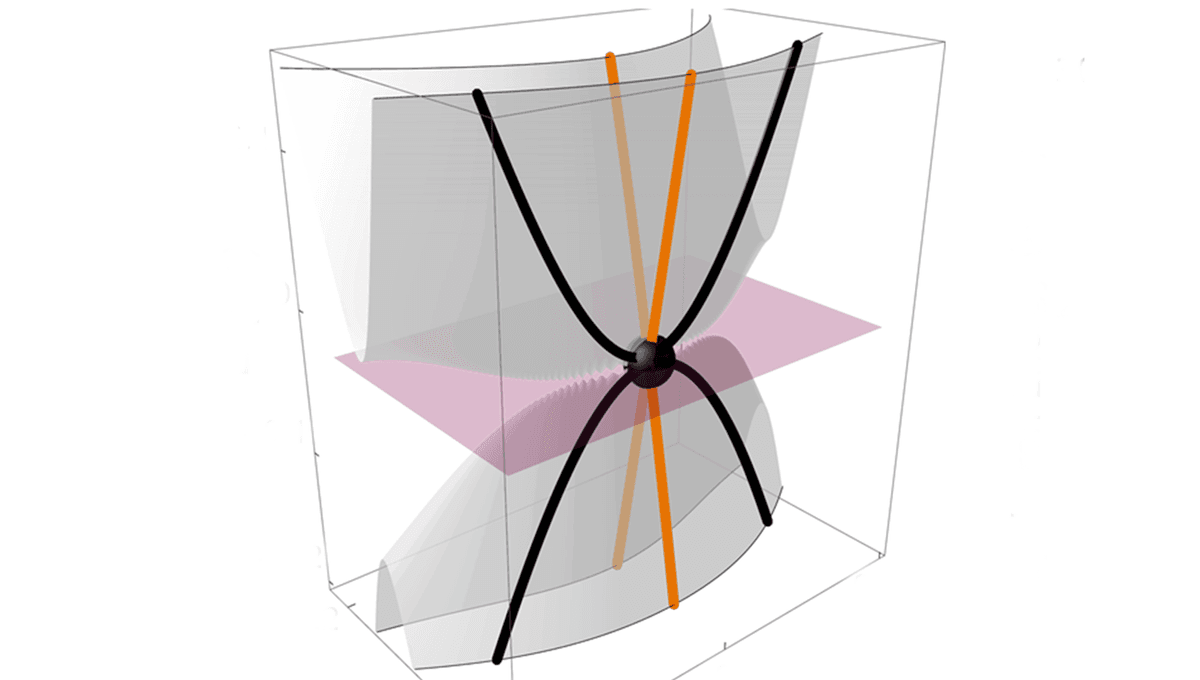
A collection of particles known as a quasiparticle has been detected behaving as if it has mass when it moves in one direction, but becomes massless when moving at right angle. Improbable as this sounds, the scientists who detected it are already contemplating applications in batteries and sensors.
It sounds like a stretched joke about a member of a boyband who abandons Catholicism on going solo, but in 2008-9 independent teams proposed what was called a semi-Dirac fermion; a quasiparticle with mass only in one direction. Now this logic-defying concept has been shown to be real, existing inside a crystal called ZrSiS (a name possibly being focus-group tested for a girl group as we speak).
Most subatomic particles have mass, whether small for electrons, or larger for protons or charm quarks. A few are massless, like photons. For a long time, it was debated whether neutrinos were massless or not, but that uncertainty is much easier to understand than something that switches between the two states.
Special Relativity holds that objects moving at the speed of light must be massless. That’s one of the reasons faster than light travel may be impossible – if you have mass you can’t travel at the speed of light, and we’re not sure how to get faster than that without out going through lightspeed. It would be nice if we could briefly shed our mass to cross the cosmic speed limit, but that seems unlikely.
However, quasiparticles – particle collections that behave as an entity (at least on some measures) – can show collective behavior impossible in any individual. This led researchers to propose the possibility of quasiparticles that would travel at light speed, and therefore be massless in one direction, but move more slowly than light in the other. However, there is – to put it mildly – often a gap between theoreticians’ speculation and what can be found. In this case, however, that gap was just 16 years.
“This was totally unexpected,” Dr Yinming Shao of Penn State University, who thankfully seems almost as bewildered as the rest of us, said in a statement. “We weren’t even looking for a semi-Dirac fermion when we started working with this material, but we were seeing signatures we didn’t understand – and it turns out we had made the first observation of these wild quasiparticles that sometimes move like they have mass and sometimes move like they have none.”
Shao’s team were shining infrared light on ZrSiS while applying a powerful magnetic field, a process known as magneto-optical spectroscopy, and studying the reflected light.
After cooling the ZrSiS crystal, which is a type of semimetal that conducts or resists depending on the direction of current, to near absolute zero and using the world’s most powerful sustained magnetic field, Shao said, “We were studying optical response, how electrons inside this material respond to light, and then we studied the signals from the light to see if there is anything interesting about the material itself, about its underlying physics.”
Some of what the team saw matched expectations, but other observations had the physicists baffled.
Magnetic fields quantize the potential energy levels of electrons even when not orbiting an atom, making in-between energies impossible. The size of the jumps between levels are dictated by the strength of the field and the mass of the electron. Fermions with mass increase their energy levels in direct proportion to the field strength. In graphene, massless fermions have energy transitions that increase as the square root of the magnetic field (i.e. B1/2). In ZrSiS, the spacing between levels rose proportionally to the field to the power of two-thirds (B2/3), something predicted for semi-Dirac fermions, although not expected to occur in this environment.
At this point Shao and colleagues called in theoretical reinforcements to make sense of what they had found.
“Imagine the particle is a tiny train confined to a network of tracks, which are the material’s underlying electronic structure,” Shao said. “Now, at certain points the tracks intersect, so our particle train is moving along its fast track, at light speed, but then it hits an intersection and needs to switch to a perpendicular track. Suddenly, it experiences resistance, it has mass. The particles are either all energy or have mass depending on the direction of their movement along the material’s ‘tracks.'”
Shao is optimistic about applications because ZrSiS has a layered structure like graphite. The capacity to make one-atom thick graphite sheets, better known as graphene, has unleashed a flood of uses.
“Once we can figure out how to have a single layer cut of this compound, we can harness the power of semi-Dirac fermions, control its properties with the same precision as graphene,” Shao said. However, it seems Shao has been collaborating enough with the theoretical physicists that some of their view of the world may have rubbed off on him. “But the most thrilling part of this experiment is that the data cannot be fully explained yet,” he said. “There are many unsolved mysteries in what we observed, so that is what we are working to understand.”
Remarkably, it’s not as though semi-Dirac fermions hadn’t been found because they’d been considered so unlikely no one had bothered looking. Instead, the team say proposals of the quasiparticle’s existence “ignited intense theoretical and experimental interest.” There were hopes of finding them in stretched graphene sheets, but even that famously strong material couldn’t handle that much strain. Still, what could be more in the spirit of quantum mechanics than a quasiparticle you can’t find when looking for, and that turns up when conducting a completely different experiment?
The study is published open access in Physical Review X.
Source Link: First Observation Of A Quasiparticle That Only Has Mass When Moving In One Direction